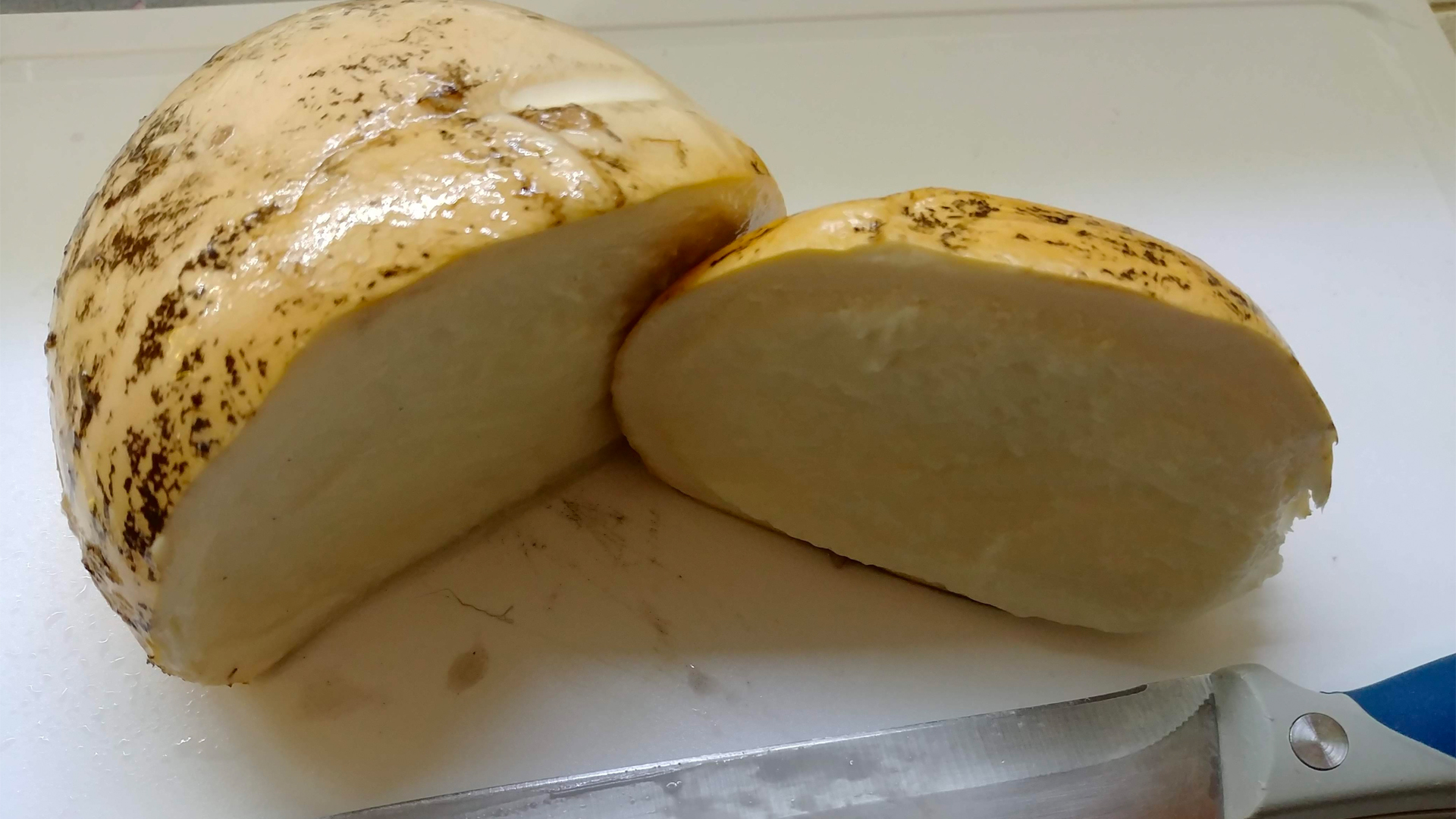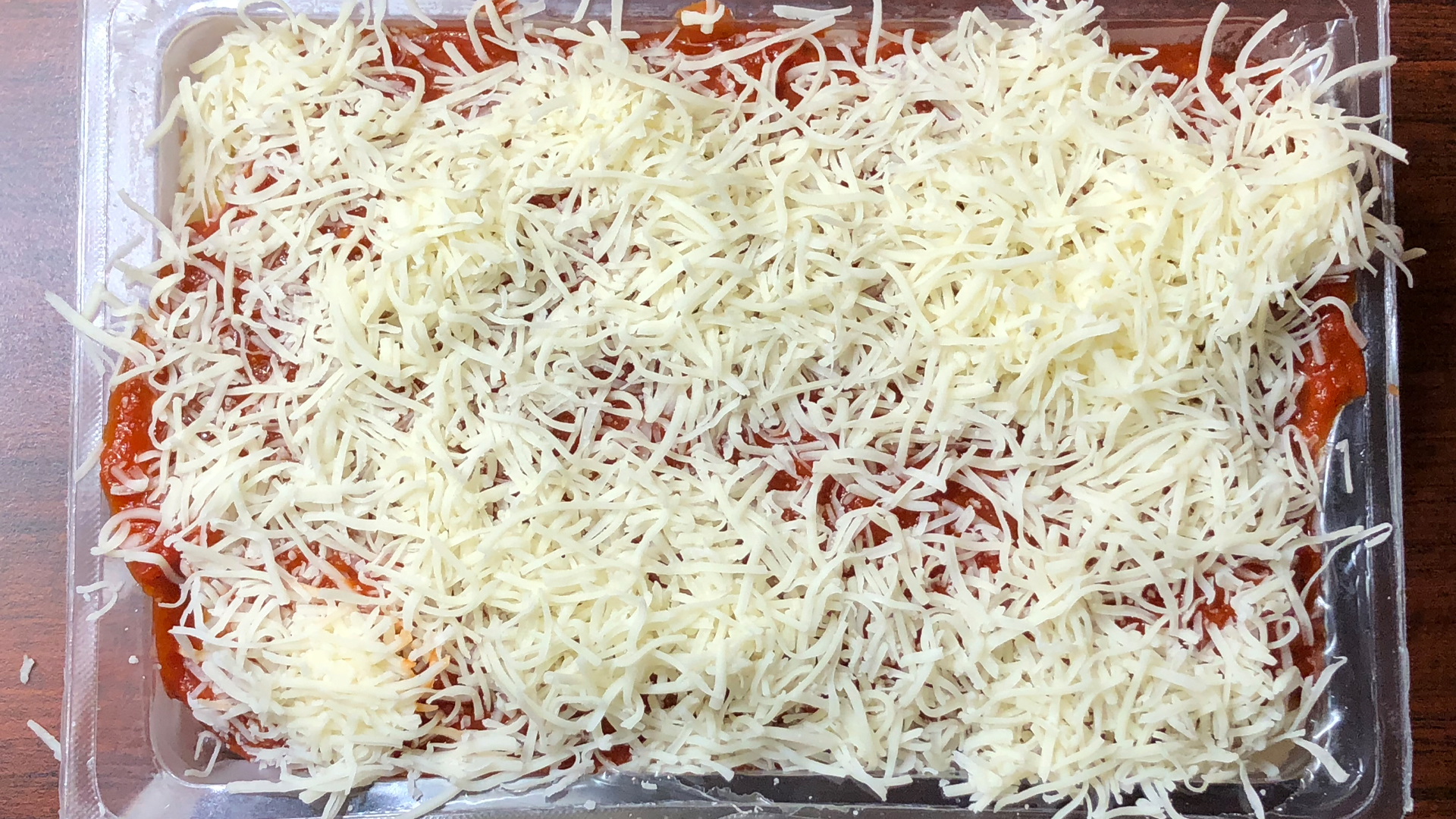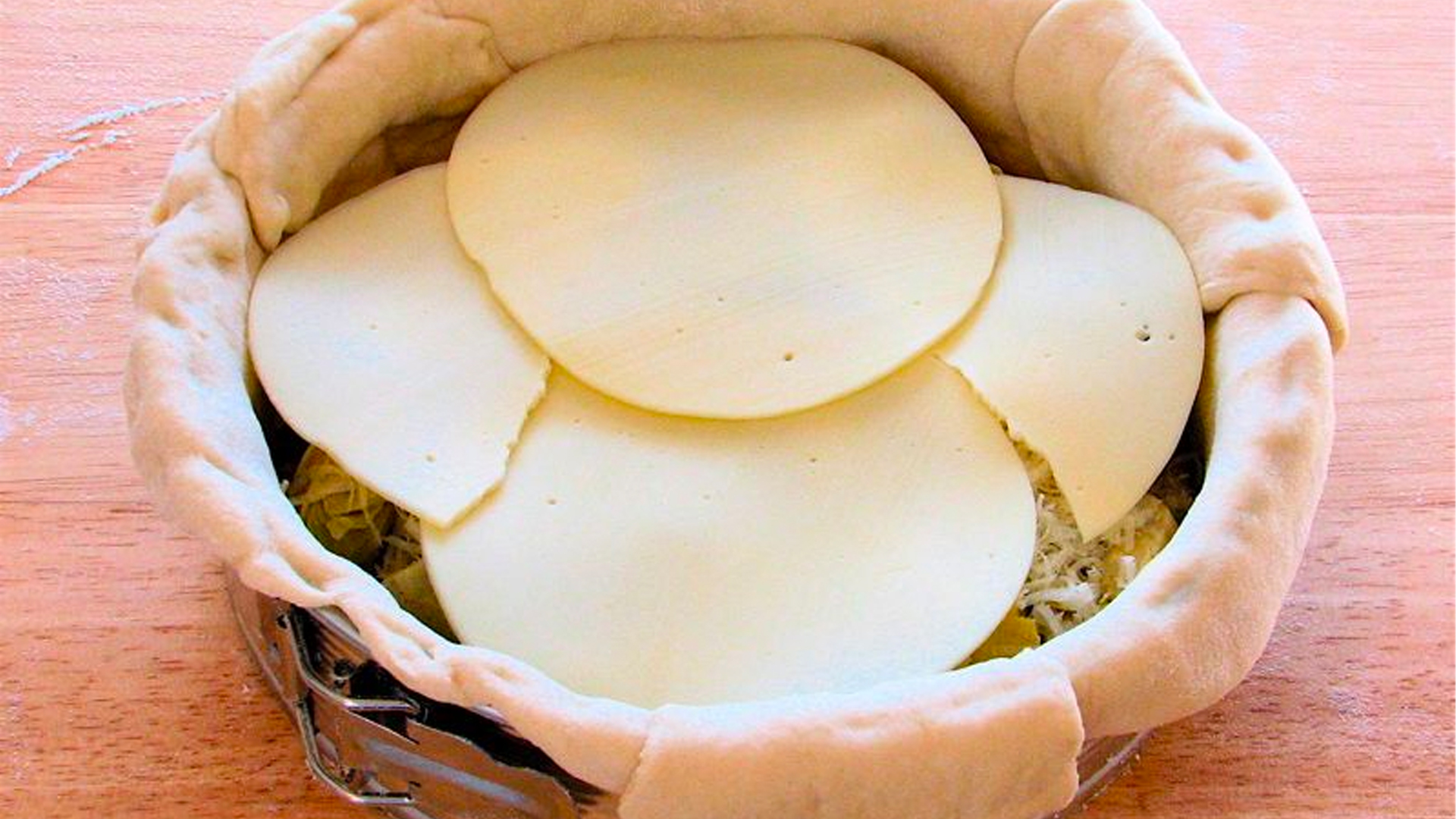Mozzarella cheese is one of many variations of cheese produced using the pasta filata method. Pasta filata is known as “stretched curd” or “spun paste”, referring to the process of heating and stretching curd directly before forming a final cheese. While mozzarella is served fresh there are a number of other cheeses that use this method for desirable characteristics.
Mozzarella Affumicata

While we typically think of mozzarella as a fresh cheese, it can also be smoked. The smoking process helps preserve the cheese and turns the exterior into a dark, cocoa-brown color. Affumicata also has a strong smoky flavor.
Fior Di Latte

The Italian term for cow's milk cheese made in the style of mozzarella is directly translated as the flower of the milk. “Fior di latte” has grown in popularity in Italy since cows produce a higher volume of milk compared to buffalo.
Scamorza

This low-moisture cheese translates to mean "idiot" or "dunce." The cheese originated in areas of Puglia, Campania, and Molise where it’s still commonly produced. The consistency of the cheese is similar to the low-moisture mozzarella used in American pizzerias known pejoratively as "pizza cheese".
Low-Moisture Mozzarella

This cheese is common in the United States where it is used as a pizza topping, but also as a processed food for products like string cheese or sliced cold cuts. Low moisture mozzarella melts well and becomes stingy and elastic. It is frequently used on lasagna, eggplant rollatini, and chicken parmigiana in part because with less water than fresh mozzarella it won’t release moisture during the cooking process leaving food overly wet.
Burrata

While burrata is trending it’s a relatively new invention. It was first produced at the beginning of the 20th century. The cheese was created in Puglia, the heel of Italy. This southern province is well below the "veal line," an imaginary line across the center of Italy. In the north, cows were plentiful, used for making cow milk cheese and eaten as meat. In the south, cattle were primarily agricultural work animals used for pulling plows and carts. The meat was tough when the animal finally died and castrated bulls, who don't produce milk, were preferred over dairy cows. By the 1920s in Puglia, some dairy cows finally arrived to produce milk. The milk was better quality than what sheep and goats could produce and valued highly. Cheesemaking can produce quite a lot of waste, and dairy farmers wanted to squeeze the most value from their rare cows. Burrata was invented to avoid any waste. The mozzarella was pinched together to form a pouch that was filled with cream and cheese. The first use of the word appeared in 1931.
Provolone

Provolone starts off like mozzarella cheese however, it’s allowed more time to dry out. After two months, provolone becomes provolone dolce, meaning sweet. Provolone piccante is aged twelve months and has a spicy, peppery flavor.
Caciocavallo

Literally translated as "horse cheese," this centuries old, aged mozzarella-style cheese is usually pear-shaped with two bulbous ends. It originated in the Kingdom of Naples and earned its name from how it was aged – on the backs of horses. Travelers would tie a rope around the horse cheese and drape the rope off the neck of the horse so they had easy access to snack on the road, or at least, the legend claims.
Ian MacAllen
Ian MacAllen is America Domani's Senior Correspondent and the author of Red Sauce: How Italian Food Became American. He is a writer, editor, and graphic designer living in Brooklyn. Connect with him at IanMacAllen.com or on Twitter @IanMacAllen.

